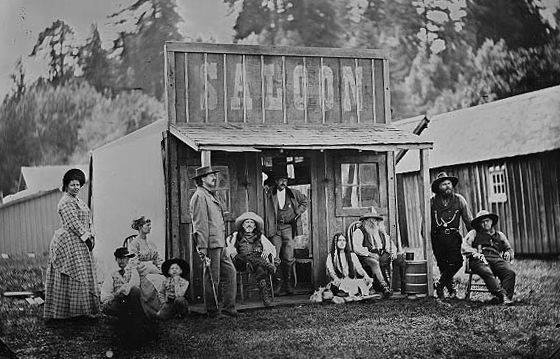
Any mining town — be it for coal, gold, silver, salt, lead, zinc or whatever — from the earliest days of the community or when the mining began, had some form of alcoholic beverage. It was either fermented nearby or was already on site in the hands of one or more of the miners.
Most all of the mining communities in Nevada had a tavern, even if it was no more than a tent, which was often the case until a frame structure could be built, thereby assuring that each community in its time had whiskey available in some manner.
Famed Western lawman Wyatt Earp was known to have operated a saloon in Tonopah in 1902.
For the most part miners and prospectors used alcohol to quench a thirst, or bolster courage for some reason or another. But alcohol was also considered necessary for medical purposes and was often given to sick children. Many stories could be told under that heading alone.
No one can be absolutely sure about the date of the first distillery in the American Colonies, but the earliest references date from the mid-1600s. Maybe it didn’t come from the Pilgrims, pious bunch that they were, but certainly by other settlers who came later.
Miners and prospectors in Nevada didn’t likely produce alcohol themselves, but no doubt traveling salesmen presented their product with great enthusiasm when they visited the mining towns. And stagecoaches, coming into a community from outside, even though drinking by passengers was discouraged on route, probably carried some in their freight supplies, as did freight wagons that supplied the mining communities on a very regular basis.
The one American agriculture product that was useful in making alcohol, whiskey in particular, was Indian maize, better known as corn. Once corn began to be grown in large quantities the development of corn spirits in the Colonies took place mostly in Virginia, Tennessee, Kentucky and southern Ohio.
To be sure, coal miners in the northwest regions of Virginia, now West Virginia, took it to the mines with them. And though straight corn whiskey was widely produced, it proved to be an uneven product at best.
Historians note that by 1792, when Kentucky became a state, whiskey production was on the upswing. This was due mainly to the fact that many in Kentucky were farmers with whom the manufacturing of strong spirits was considered a proper agricultural pursuit.
What they produced went with the settlers moving further west in the great western migration. Did the wagon trains carry whiskey? Probably some did. The great cattle drives from Texas in later years likely did also.
The 1965 movie “The Hallelujah Trail” with Burt Lancaster depicts a wagon train headed to Denver with a cargo of whiskey for the miners. Similar shipments likely came to most all the counties of Nevada.
Whiskey experts state that in 1789, Elijah Craig of Bourbon County, Kentucky, began making his own brand of whiskey. There was even an event called the Whiskey Rebellion in 1791 when President George Washington imposed an unpopular whiskey tax on producers.
By the end of the Civil War, Kentucky corn whiskey began to find a character of its own and had found favor throughout the United States. The miners to the gold fields of California and Nevada before, during and after the Civil War, brought it with them. Most, if not all, of the taverns in Nevada’s mining communities offered it and a miner could buy his own jug if he so wanted.
On May 4, 1964, the Congress of the United States formally recognized the unique quality of Kentucky bourbon whiskey and proclaimed it a part of the American heritage. However, untold numbers of Nevada miners had known that for a long, long time.
Dave Maxwell is a Nevada news reporter with over 35 years in print and broadcast journalism, and greatly interested in early Nevada history. He can be reached at maxwellhe@yahoo.com.